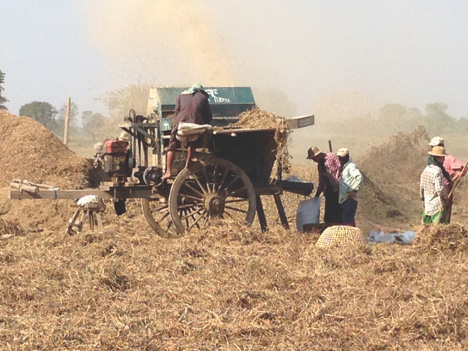The Acceleration of Mechanization in the Agricultural Sector
Factors toward Agricultural Mechanization in Burma
By Myat Thida Win and Aye Mya Thinzar
 Agricultural mechanization is already well advanced in the village tracts that FSP surveyed close to Yangon city and in Yangon Region and Ayeyarwady Region, almost completely replacing the use of draft cattle.
Agricultural mechanization is already well advanced in the village tracts that FSP surveyed close to Yangon city and in Yangon Region and Ayeyarwady Region, almost completely replacing the use of draft cattle.
Economic reforms and the growth in the non-farm sector from 2011 have stimulated an ongoing process of structural transformation, in which labor is moving from agriculture to the more productive urban industrial and service sectors. Resultant rural labor shortages and increases in real wage rates have been major drivers of mechanization in agricultural sector, particularly from 2013 onwards.
Several factors are likely to have further contributed to this development:
• The declining real price of some types of machinery.
• The increasing availability of financial services following reforms post-2011, and particularly from 2013 onwards.
• The rise of rental markets, especially for large-scale equipment (combine harvesters and four-wheel tractors), for farmers with small and large landholdings alike.



 Print
Print Email
Email